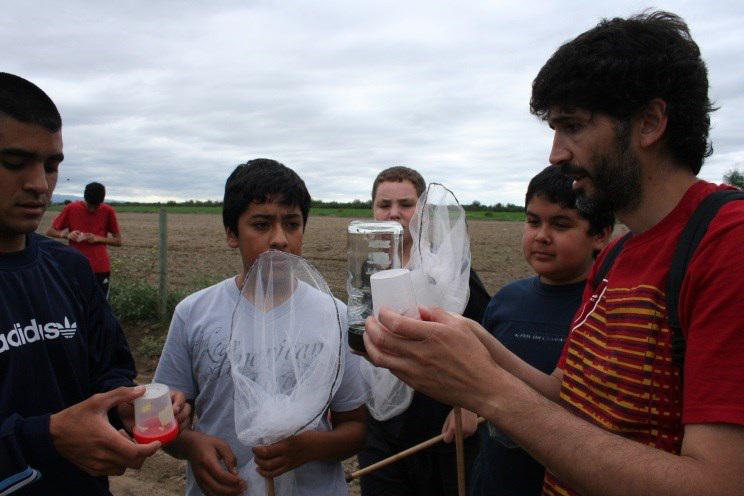Julián Padró
The project aims at creating a field school in order to study the diversity of arthropods in one of the driest areas in the continent rich in endemism, which is at risk of degradation.

The study area is located in north-western Argentina and is considered as an "island" zone for its exceptional humidity and dense vegetation conditions in one of the driest areas in the continent. Furthermore, it is considered an endemism area categorized "at risk of degradation" according to the regional desertification study. Knowing the main ecological factors, on which lowest trophic levels depend, along with a biodiversity survey will allow to assess its conservation value as well providing vital information for future management plans. Despite their ecological importance, arthropods have not yet been surveyed in the area. The information provided by the identification of new species will be central parts of the results as products of evolutionary processes that cannot be replaced. The information acquired will contribute to make more accurate decisions in order to preserve hot spot areas in the Valle Fertil natural reserve.
We plan to:
Train students in the methods of sampling, data analysis, and the use of environmental indicators to assess the health of the ecosystem, as well as to implement sustainable practices in order to shift the current degradation tendencies.
Use taxonomic keys along with the assistance of taxonomists from the entomology lab of Buenos Aires University to identify specimens. Once in the lab, species identification will be performed by “DNA barcoding” technique (mitochondrial gene CO1) enabling non taxonomists to identify specimens. To ensure the morphological identification and to get level of species, the identification will be performed by comparing specimens with the reference barcodes to find the matching species. Also, the use of classical diversity indices will be complemented with genetic diversity to estimate interspecific and intraspecific variability as well allowing to find unique haplotypes and/or new cryptic species (with particular interest on existing endemism).
Elaborate a technical report for the Environmental Agency of the province reporting the results in association with relevant data of the conservation status in different areas of the reserve. This report will discuss the results in terms of the conservation value of the ecosystem to identify hot spot areas for future management plans in the natural reserve.
Deposite holotypes in the collection of the Argentinean Museum of Natural Sciences (MACN) located in Buenos Aires.
Create an Arthropod Collection as well posters, signaling boards and field guides for the Natural Reserve Interpretation Center.